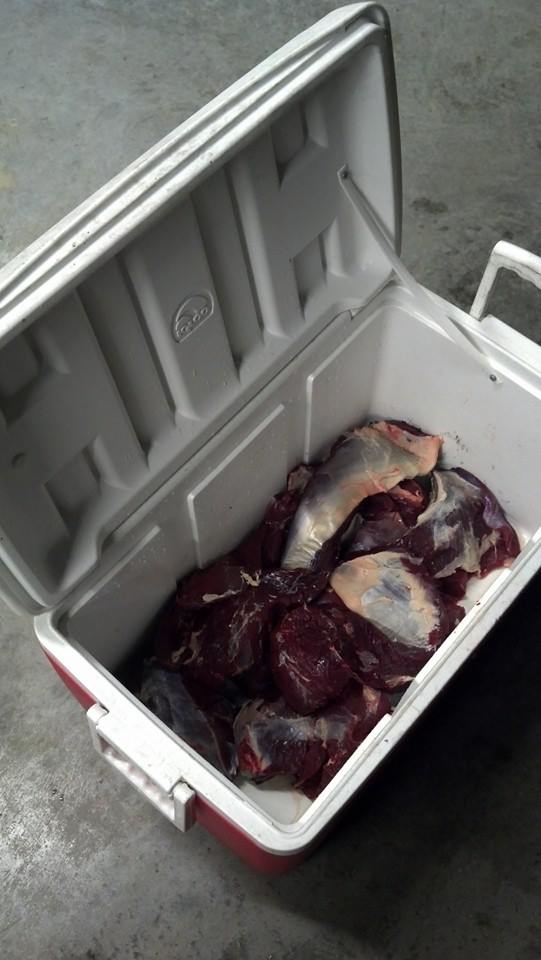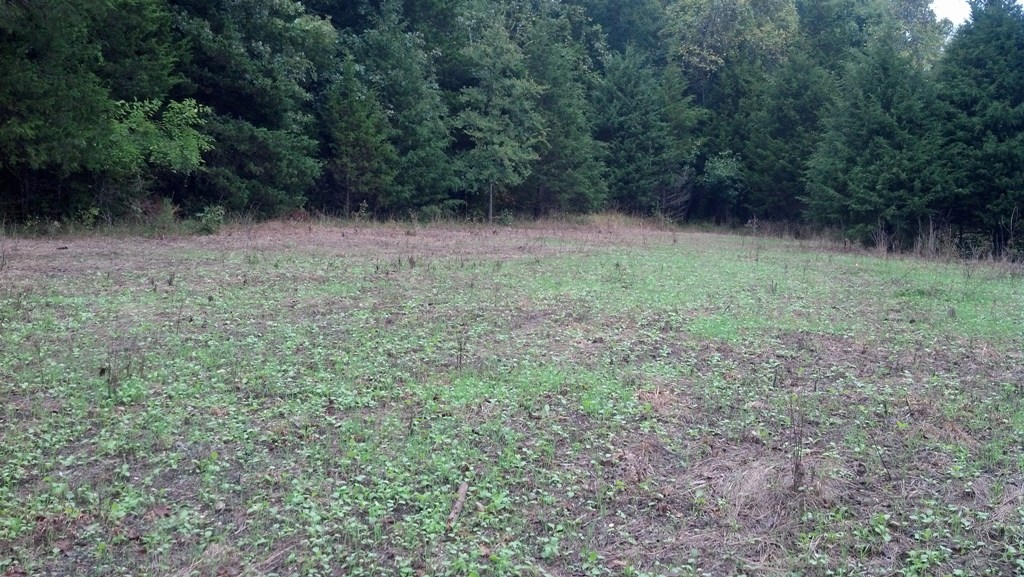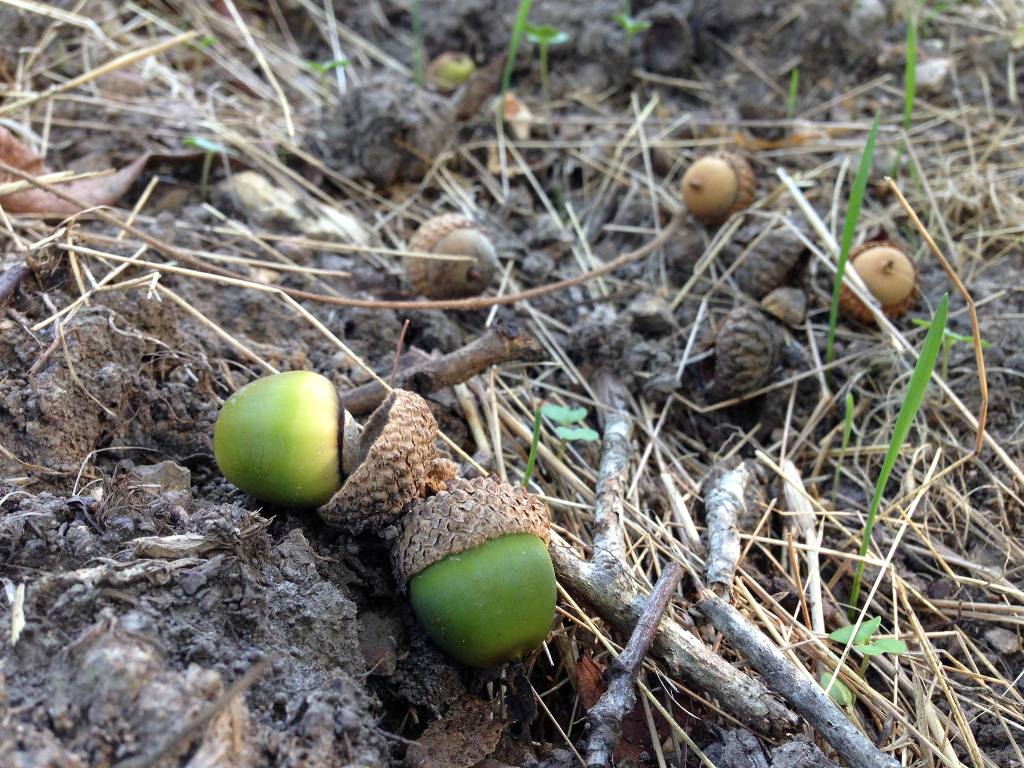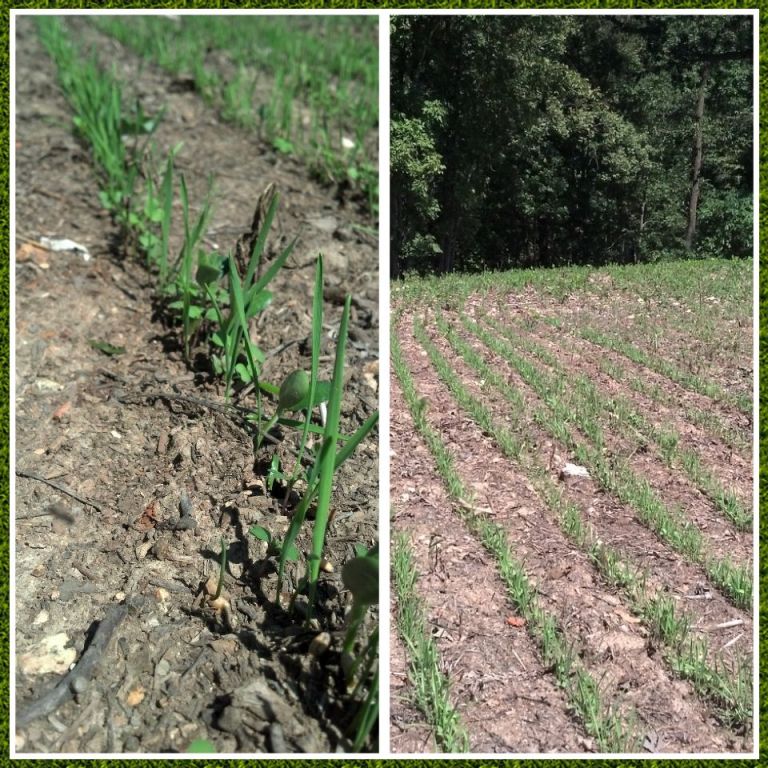Category: Hunting Blog
Easy Crock-Pot Venison BBQ: 4 Ingredients
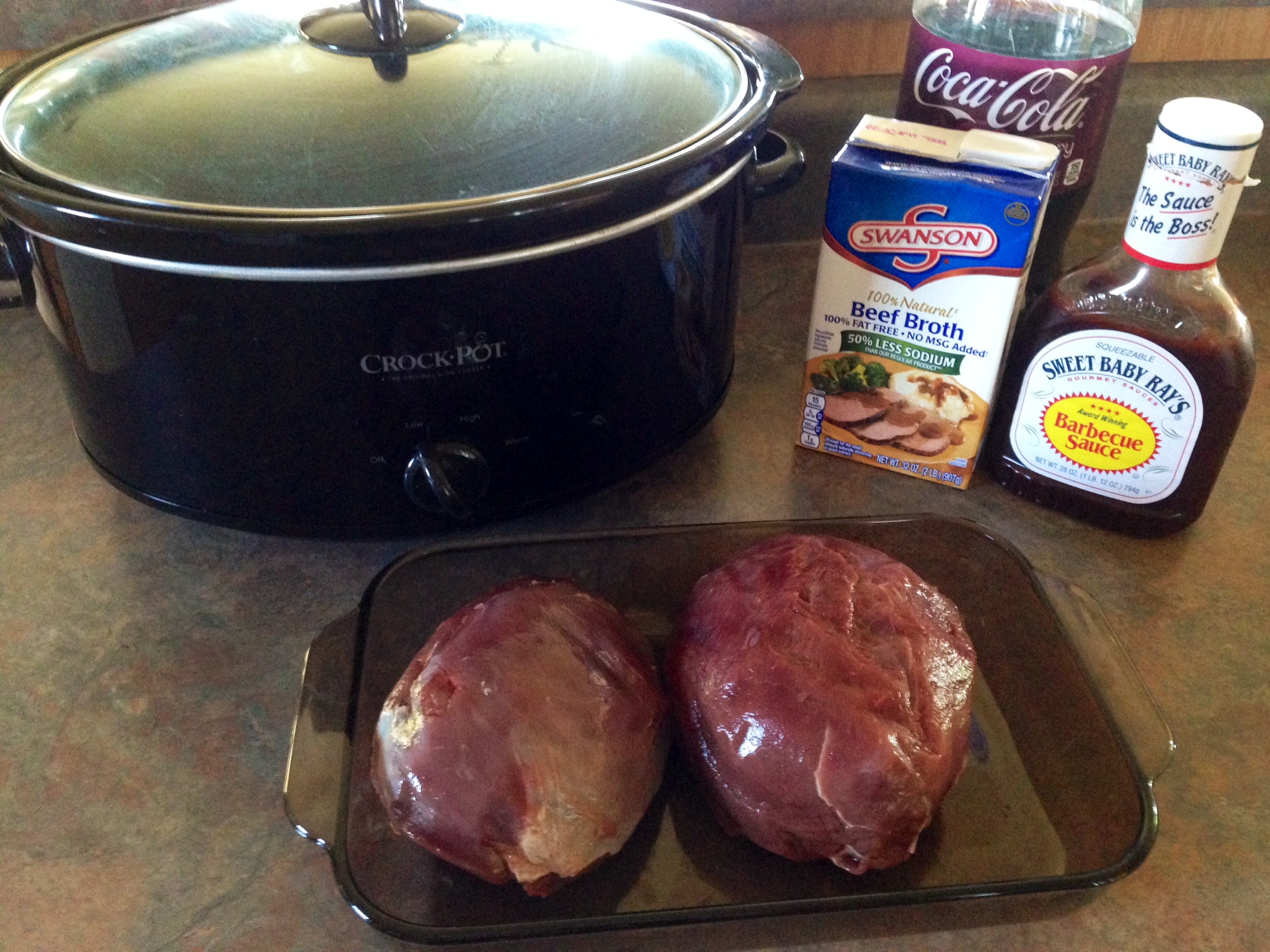
This is a Woods family favorite: 4 ingredient BBQ venison.
Are you a fan of BBQ? If you are, you might be like us and when we go to a new city or region of the country we stop in and check out how they cook their BBQ. Memphis and Kansas City are famous for their BBQ! It’s good stuff – but not as good as the BBQ from my home state of North Carolina – specifically chopped pork BBQ from the annual BBQ fundraiser in Unionville, NC . If you are in the area this Friday, November 7th, you should get over there and get some. Make sure you try their Brunswick Stew. It’s the best anywhere!
When you have a freezer full of venison but want the taste of BBQ, what do you do? You cook venison BBQ of course! Many folks are great at smoking venison and making a tasty meal. I’ve never developed the skill or patience in that area. As a busy working mom, I’ve had to look for a short-cut. I’ve found that in my trusty Crock-Pot!
For years I felt that the ball roast (also called sirloin tip roast, round roast, or ball tip roast) was one of the least desirable cuts to cook. It is ribboned with connective tissue that makes it a little tough and chewy. Using the Crock-Pot slow cooker method and then chopping the meat up eliminates the negatives of this cut.
Here is a simple, easy, and quick recipe for making venison BBQ that is a staple around the Woods home throughout the year. It freezes well so don’t be afraid to make a bunch!
Do you have a different way to make venison BBQ? If so, please share it on our facebook page! Enjoy!
Tracy
Ingredients:
- 2 venison ball roasts (remove white/silver connective tissue that surrounds the “ball”)
- 1 large bottle of your favorite BBQ sauce
- 32 oz. carton beef broth
- 12 oz. dark cola
Directions:
Put all ingredients into the Crock-Pot and cook on low for 10 – 12 hours. (This recipe is so forgiving that longer cooking will only add more tenderness.) Remove the meat to a cutting board and coarsely chop. If you like “wet” BBQ slowly add and stir the cooking liquid into the chopped meat suitable to your preference. If you like a stronger BBQ flavor, add bottled BBQ sauce to the chopped meat.
Easy bonus meal: Make a BBQ soup from the remaining “broth” in the Crock-Pot. Add whatever veggies you want to the base to make your own tasty soup! I usually add a bag of frozen mixed vegetables, 1/2 cup frozen diced onion, 2-3 14.5 oz. can broth, 2-3 can diced tomatoes, a 1/2 tsp of garlic powder and 1 cup chopped venison. Cook until the vegetables are tender.
When Acorns Have Gone Bad
White-tailed deer have been eating acorns since both deer and acorns existed. Acorns are a huge amount of a deer’s diet, but there are different variables that can help you determine what type of acorn is the preferred food source. Knowing the time of year, previous rainfall, and daily temperatures can all play into making you a successful hunter this fall.
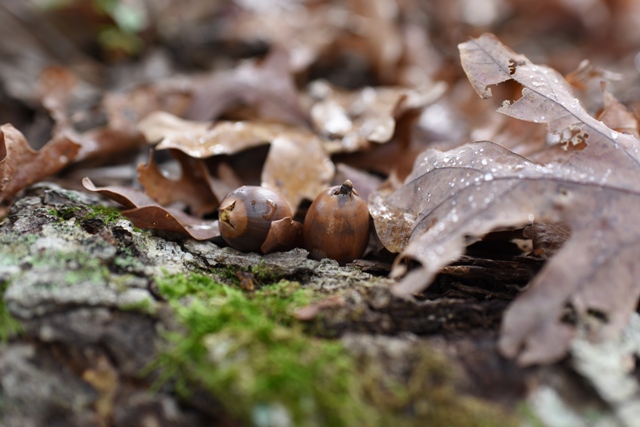
Deer usually do not consume sprouting acorns.
Hunting acorns is a huge part of our hunting strategy here at The Proving Grounds. Grant and I spend a lot of time talking about acorns, scouting for them, observing feeding habits of other animals, and trying to understand the acorn status for our current hunting situation. Late this summer we realized that most of our oak trees had a high amount of acorns. This included both red oaks and white oaks. You can hear Grant discuss the difference in episode #139, Antlers at Dusk. In summary of that episode, we generally hunt white oaks during the early to mid season and focus more on red oaks during the late season. White oak acorns aren’t as “hardy” as red oak acorns, so during years with lots of rain and warmer temperatures acorns that have already fallen tend to start sprouting or spoil. This “spoiling” will cause the deer to stop feeding on them as heavily and the deer will transition to another food source.
What is that other food source? That could be a green food plot, soybeans, a corn field, or another area of acorns. This past week I started noticing a transition of squirrels feeding on typical White Oak acorns to post oak acorns, which are also in the white oak family, but from a different variety of tree. Post oak acorns are generally smaller and harder than a typical White Oak acorn, but the deer still love them. In southern Missouri the post oak acorns tend to fall slightly later than the typical White Oak acorns so we’ll be keeping a close eye on the post oak trees. If post oak acorns become the main food source, it will not only shift our hunting strategy, but also change which areas we hunt the most.
Knowing the preferred food source is critical to hunting success. By finding the main food source, especially this time of year, we find the does, which also means finding those rut-crazed bucks!
Get out this week and enjoy this beautiful time of year!
Daydreaming of Whitetails,
Adam
The Biggest Buck We Have Never Hunted
Understanding a buck’s characteristics will be the deciding factor in your success or failure this fall. When the calendar changes from September to October and bucks start to shift into pre-rut phase you never know who will step in front of your camera. When that buck does make his appearance, it’s important for you to know how to plan your strategy.
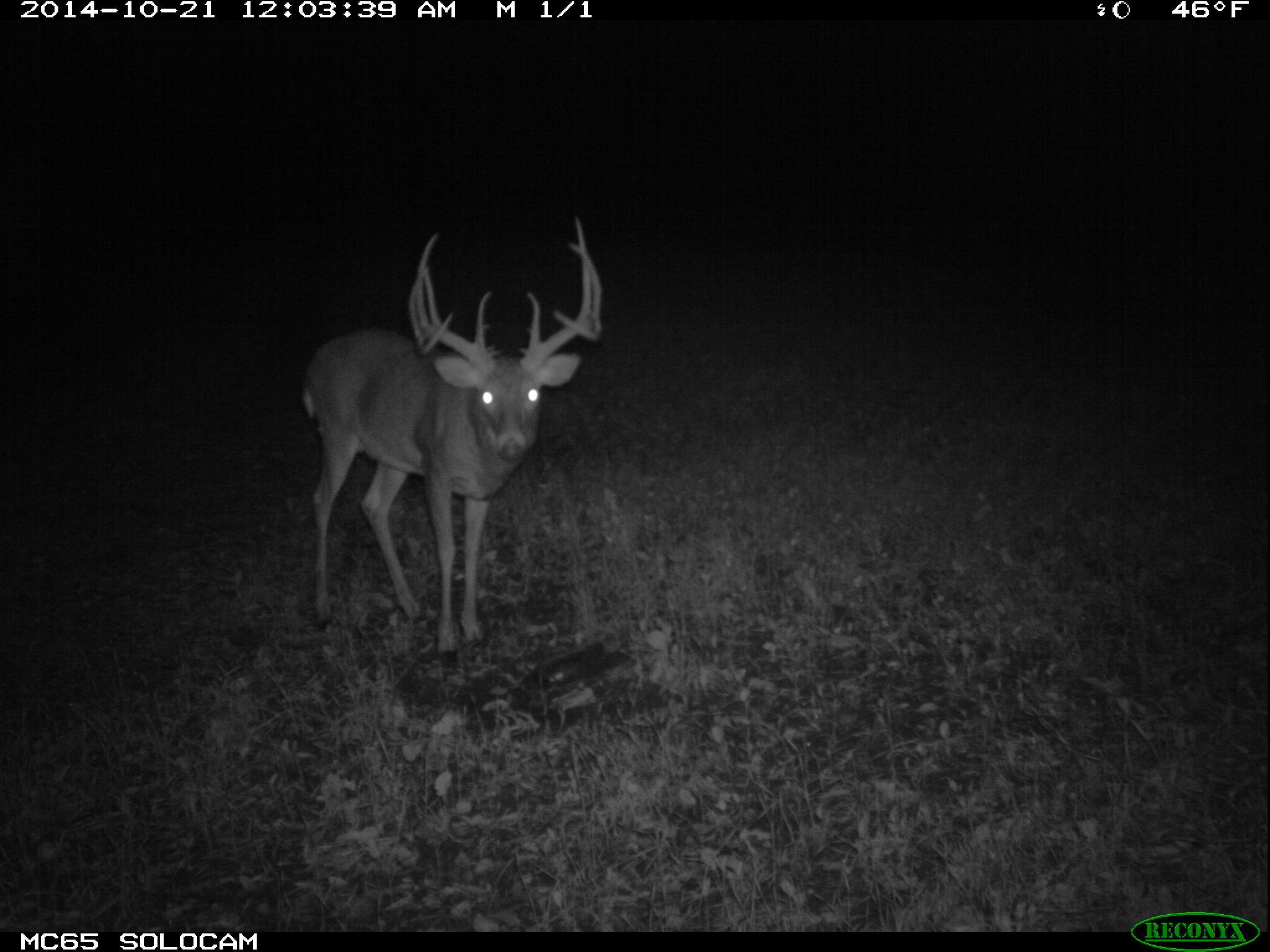
Royal George making his usual stop just after midnight. If his pattern doesn’t change it will be tough to harvest this buck.
Bucks that would gross score over 160” are extremely rare for us here in the Ozark Mountains of southern Missouri. So when a buck we call “Royal George” walked in front of our Reconyx camera last summer, we quickly put him at the top of our minds, but since he was only three we wanted to give him another year. George is an incredible buck, and once we got to know him, we found out one of his characteristics that helped him get so big. Looking through all the images we have of him, it’s safe to say that 95% of them are at night. The remaining 5% of pictures were taken during June when bucks are seen more regularly during daylight. Now that George has reached 4.5 years old he’s on the hit list, but there is a difference between being on the hit list and being hunted. Here is where a lot of hunters will make mistakes. Listen up! Just because a hit list buck is showing up at one of your cameras, that doesn’t mean you should be hunting him with regularity. Why should you waste time and put pressure on a buck that probably won’t step out while you’re hunting anyway? You shouldn’t. This brings us back to George who is very nocturnal. When I say very, I’m saying that every picture taken this year of George has been before or after legal shooting hours. Yes, George is living on The Proving Grounds, but he has shown no signs of moving during daylight. What does this mean? We’re not focusing our time hunting a buck that we have a very small chance of even seeing, let alone harvesting. The best approach we can have with bucks like George is to stay out. Let him experience life with little to no pressure, and hope that when the time comes for him to be searching for a receptive doe he’ll choose her over darkness. When that day comes we’ll be ready to capitalize on his decision to choose does over darkness.
One of the biggest mistakes a hunter can make is getting anxious and spending hours hunting a buck that isn’t moving during daylight. This mistake can push a buck even farther into cover and darkness. By limiting the amount of pressure on your deer herd during early season, you can reap the rewards of daylight activity when the temperatures are cool and the hit list bucks are on their feet.
Daydreaming of Whitetails,
Adam
How To Use Scrapes To Locate Bucks
The last two weeks of October are two of my favorite weeks of the year. The leaves are starting to take on lots of color, while the deer are beginning the yearly ritual. It’s an exciting time of year, especially for deer hunters! A lot of bucks will be loaded up in the back of trucks over the next few weeks; don’t you want to be one of those happy hunters? Use scrapes to find where bucks are active and move in for the kill!
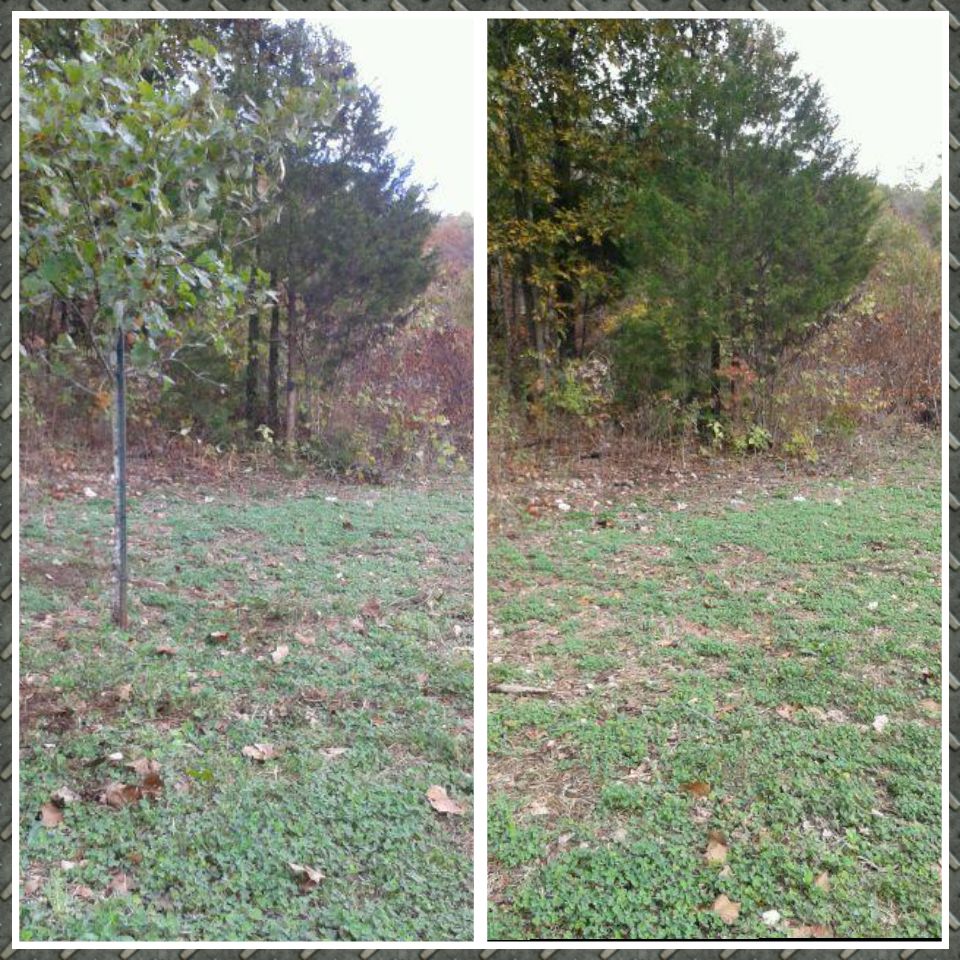
Before and after of the mock scrape created to monitor bucks in the area.
There are many reasons why I love this time of year, fall leaf color, cool temperatures, MLB postseason baseball, but one of my favorites is the whitetail pre-rut. It is a great time of year to have those trail cameras out! Bucks are spending a lot of time working scrapes right now and that can make for great trail camera locations! We put several of our Reconyx cameras overlooking scrapes this time of year. Not only do we find scrapes, we also make them. If we’re in an area with very limited scrape limbs, we will make a scrape tree. Making a mock scrape is a very simple process. Start by bringing in a small tree with horizontal limbs about 4.5 to 5 feet off the ground. Drive a t-post into the ground at your desired location and then tie the tree to the post securely; making sure the tree is stable and secure. Once the tree is secure, scrape the ground under the limbs exposing bare dirt, just like a buck would do. This is a great way to locate bucks in areas where scrapes are very limited.
Bucks of all age classes will be checking scrapes over the next few weeks. If your cameras are watching the scrapes you’ve got a great chance at catching a hit list buck! Once you locate a buck, you should move in quick! It could be a brief window of time before he’s off cruising for receptive does.
It’s an amazing time of year, find time this week to get outside and enjoy this wonderful world God created for us!
Daydreaming of whitetails,
Adam
Cooking Deer Meat: Recipe For Slow Cooker Venison Roast
About two months ago I went out to our freezer and realized that we were down to three (3) packages of venison. The opening of bow season on September 15 was highly anticipated as we really needed to get some meat in the freezer! Thankfully, Grant arrowed a doe that first week. We now have a start on building our supply of venison back up for the next year. (You can see that hunt here in the GrowingDeer.tv episode “Bow Hunting: Opening Day, Buck Down!”).
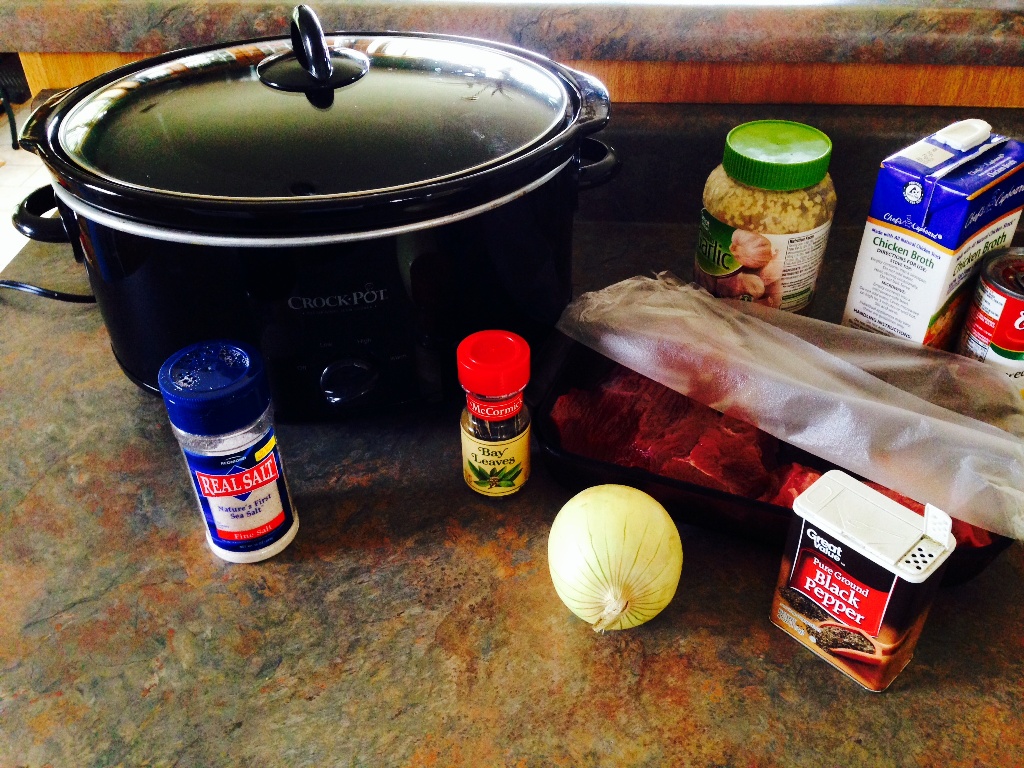
Before you start preparing the venison roast for the crock pot gather all the ingredients.
Grant said we are beginning to get too many deer on the property. In order to keep the deer healthy and in balance with the available food supply “Dr. Woods” has prescribed that we take a good many does to help balance out the population. That is welcome news for our family food budget for filling the freezer with a great quality meat! As the season progresses expect to see Grant and Adam taking more does and know that meat will feed the family!
As you might expect, eating venison at our house is an everyday meal. I cook venison as frequently (or more) than most people cook pork or beef. Our kids have grown up eating healthy venison instead of beef or other red meats. The crock pot (slow cooker) is my answer for a quick, easy meal for my family. Below is my favorite recipe for cooking venison roast. I hope you give it a try and enjoy it as much as we do! It is super easy yet tastes like a gourmet meal! If you start it before leaving for work in the morning, the smell (aroma if you’re fancy) of it cooking will knock your socks off when you get home in the late afternoon!
Tracy
Ingredients:
- 1 (3 to 4 pounds) venison roast
- 1 teaspoon salt
- 1/2 teaspoon black pepper
- 2 tablespoons vegetable oil
- 1 cup thinly sliced onion wedges
- 3 cloves garlic, crushed
- 2 bay leaves
- 1 (10 3/4 ounce) can cream of mushroom soup
- 1/4 cup red wine
- 2 tablespoons Worcestershire sauce
- 1 large carton beef or chicken broth
Directions:
Place venison roast in lightly oiled slow cooker/crock pot. Add remaining ingredients. If there isn’t enough liquid to cover the roast, add water or additional broth. Cook on low for 8 to 10 hours.
Remove and discard the bay leaves before serving.
Note: You can easily add sliced carrots and potatoes on top of the roast to cook along with the meat. If you do this – drizzle a little olive oil on them along with a light sprinkle of salt, pepper, and very light sprinkle of garlic powder.
Hunting Strategies: Adjusting Your Game Plan
It’s been a great bow season so far! The GrowingDeer Team has been blessed enough to have harvested several deer already. The weather so far has been fair to poor to say the least. Now is the time to study the available food sources and our game plan. We need to decide if we will continue with our current strategy or adjust for changing food sources.
Most of our hunting so far has been on the edge of green food plots. Over the last week we’ve seen and heard many acorns falling on the ground. After a successful hunt last night, Grant studied the inside of a large does’ stomach to find it packed with acorns. Lesson learned – it’s time to start hunting acorns! If we continue with the approach of hunting food plots, we will soon be frustrated with little deer activity. If we start adjusting our hunting strategies and find the right oak tree we could be in for a very fun hunt!
Recently we were out on the property scouting and we found what looks like a very active oak tree. This specific tree, a Chinkapin oak, is in the white oak family and produces an acorn a little smaller than your typical white oak, but this nut is still a favorite to the deer. Once we took a few more minutes to look under the tree we knew deer were feeding on the fallen acorns. After studying the area we decided our best option was to use a Redneck Bale blind tucked away in the brush about 25 yards from the tree. We are excited to get back in the area and climb into the bale blind for the first hunt!
Get outside and scout those food sources! You may need to change your strategy to make sure you’re not missing out on any dynamite hunting locations.
Daydreaming of whitetails,
Adam
Hunting The Wind
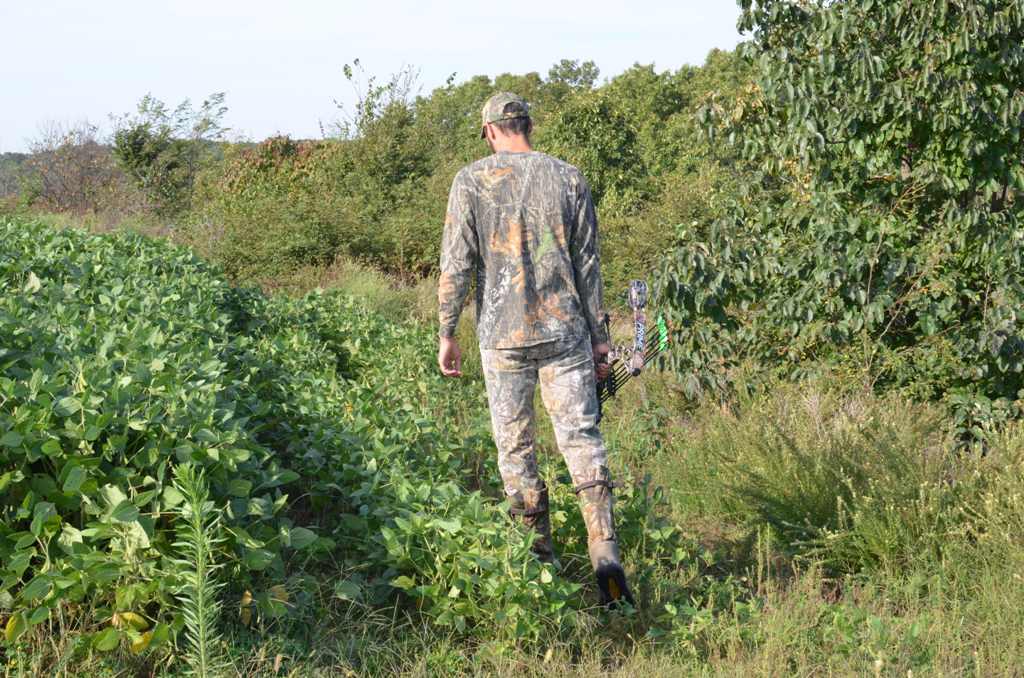
Playing the wind is just as important when walking to and from your tree stand.
If you are like the GrowingDeer Team, you have spent your summer preparing for deer season. Now that it has arrived, it is one of the most exciting times to be a hunter. In our eagerness to get into the stand, it is important that we consider the direction of the wind and where it will be blowing our scent. On the days we hunt, we pay close attention to the wind’s direction and speed. In the Ozarks, where we hunt, the steep terrain tends to cause the wind to swirl in the valleys but remains consistent on the ridge tops. This means there are very few days we can hunt the valleys. We wait until the wind is not carrying our scent all around us, spooking deer. To prevent this from happening, each stand location is hunted based on a specific wind direction. If the conditions aren’t exactly right for a particular stand, even on the ridge tops, we simply don’t hunt it. This practice has helped our team have successful hunts. If you are headed out to your stand, take a few minutes to consider the wind so you can have a great hunt without alerting deer of your presence.
Managing whitetails with you,
Daniel Mallette
Broadcasting Fall Food Plots
Due to rainfall and hunting schedules we used slightly different techniques for our fall food plots than we have used in past years. We usually plant our food plots with the no till drill. This year the fields were muddy and we had a trip planned. We wanted to get the seed on the ground before heading to Kentucky for the archery season opener. This called for boots, seed broadcasters, and enough energy to cover some ground. Instead of drilling the seed into the ground we broadcast the seed on top of the ground and hoped for rain.
We received a rainfall within two days of broadcasting our seed, but it wasn’t in the amount that we hoped for. We checked our Reconyx cameras and noticed turkeys were in the fields almost every day. These turkeys were most likely eating the soybean and wheat seed (that hadn’t germinated yet) off the ground.
A lot of times a person who doesn’t have the equipment to use a no till drill on their food plots will use a broadcaster and spread the seed on top of the ground. If it doesn’t rain soon after broadcasting a lot of the seed will be carried off by birds. This is why it’s important to check your food plots after planting to ensure you have a great stand of food. This is especially true when broadcasting a food plot. You don’t want to return to hunt and be upset with your lack of results!
With rain quickly approaching we returned to check our plots and found that a couple of them hadn’t grown as well as we had hoped. So as it rained we broadcast more seed. After having over one inch of rain in 24 hours we’re confident we’ll have a great stand of Brassicas, wheat, and soybeans.
Remember to always check those plots to ensure a great food plot to hunt over throughout the hunting season. If germination was weak don’t be scared to go back into your plot and broadcast again.
Daydreaming of whitetails,
Adam
Opening Day Challenges!
It’s only a few days before Missouri archery season opens up. Yes, you heard correctly, IT’S LESS THAN A WEEK AWAY!!! YAY!!! It’s a very exciting time of year for not only the bow hunters in Missouri, but for all the bow hunters across the nation! With bow season opening up soon, it’s time to start thinking through where we’re planning on hunting.
Like late season hunting, it’s about finding the food source. Whether that is a soybean field, a white oak grove with freshly dropped acorns, or an Eagle Seed Broadside blend, these can all be early season hot spots. Here in the Ozark Mountains, we are dominated with trees and not just trees; we’re dominated with oak trees. Red and white oaks are everywhere! Some years over 80% of the oaks can be carrying acorns and dropping them throughout the season. This makes it very difficult to pattern not just mature bucks, but does as well.
That’s why it’s very important to know your property. Are there acorns? Is there a soybean/corn field deer are frequently using? We had a late frost in this part of the Ozarks and thought there wouldn’t be many, if any, acorns this year. We were wrong about that. Grant and I have been watching the acorns form on certain trees throughout the summer. Not all of the oaks have acorns. We estimate only 40 to 50% of them have produced acorns. This means Grant and I will be taking a few scouting excursions trying to find that one oak that is dropping acorns and the deer are hammering! In our area, acorns have been the primary food source since deer populated the area way back when. This hasn’t changed even after highly craved soybeans have been planted across The Proving Grounds year after year. Acorns are king when they’re falling.
With all that being said, Grant and I will be watching the Reconyx cameras and slipping on the LaCrosse boots the next couple of days trying to find a pattern so we can have a successful hunt on Monday for Missouri’s opening day!
Be sure to know the food source in your area so when opening day gets here, you have a plan and you can succeed!
Daydreaming of whitetails,
Adam
The Importance Of Soil Moisture
It never fails; when the calendar reaches August I have those buddies that call me saying they’re headed to the farm to plant their fall food plots. I usually do my best to talk them into turning around and going back home to sit in the air conditioning. Yes, a huge amount of fall food plots are planted in August, but there are several variables that determine the day(s) you can plant.
Before I discuss the variables that we use to help us determine when to plant, let’s first understand that a seed is a living thing. It’s not a dead organism that somehow magically comes to life when mixed with water and soil. If it’s too hot and dry for you outside, it’s probably too hot for the seed as well.
The most important factor with determining when to plant is soil moisture. If the soil is powder and dust you should wait for rain and not stress your freshly planted seeds. The first couple weeks the seed/plant is in the ground are the most important. They’re establishing root systems that will help them survive longer into the fall and even winter; if they’re stressed they won’t produce the healthiest root system they can, which means lower survival rate.
The second most important factor in determining when to plant is future rain forecasts. I’ve made the mistake in the past of having soil moisture and planting my plots only to watch them receive no rain and dry up and die. Watching your extended forecast and seeing rain predicted is a great sign to plant those crops. If the rain chances are high day after day you can plant your crops in dusty conditions knowing that moisture is soon to come.
Planting fall plots on the same day year after year is an error. Planting these crops all depends on soil moisture and future rainfall. This means you could be planting in the middle of August or September. This fall don’t make the mistake that so many of us have done. Understand both your soil moisture and future rainfall and plant the best fall plots you can.
Daydreaming of whitetails,
Adam



